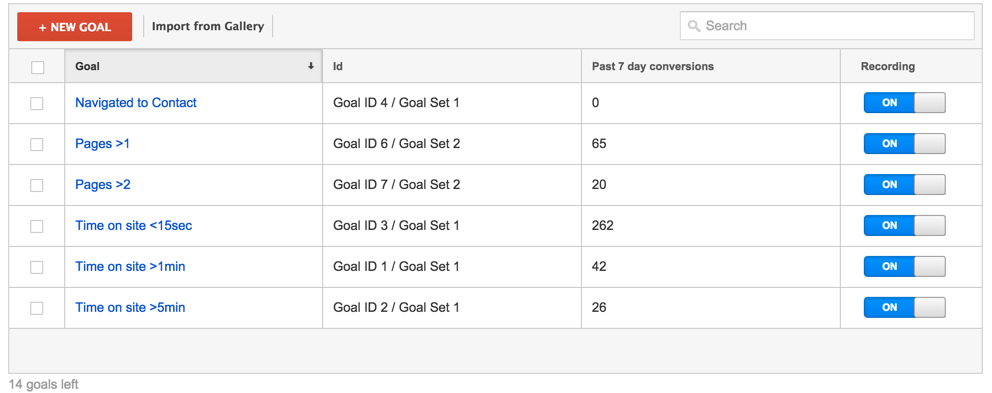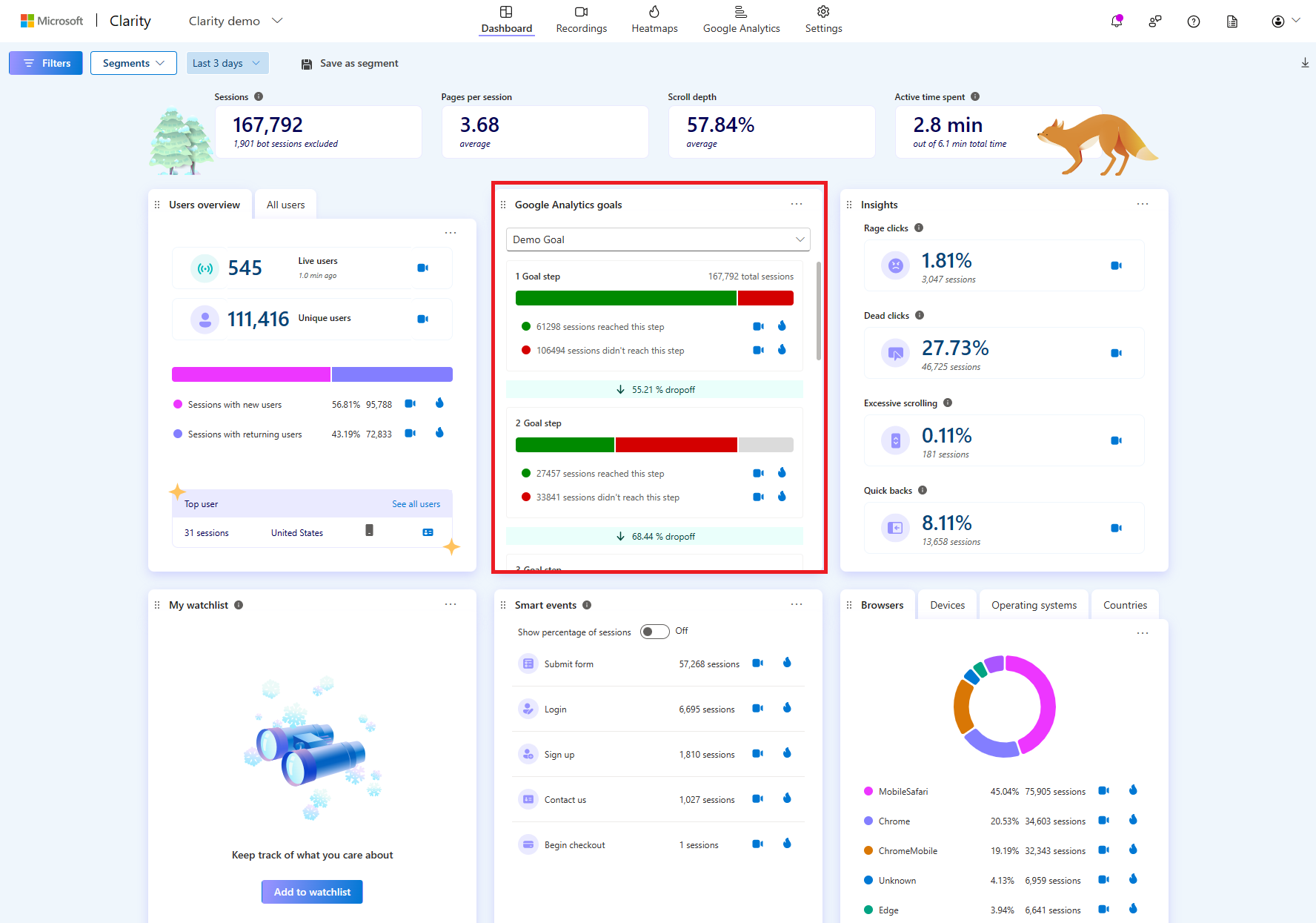Comprehensive Checklist of What Data Is Google Analytics Goals Unable to Track
Comprehensive Checklist of What Data Is Google Analytics Goals Unable to Track
Blog Article
Unveiling the Blind Destinations: Understanding What Google Analytics Goals Can not Measure
In the realm of electronic analytics, Google Analytics stands as a powerful tool for monitoring and evaluating on-line customer interactions. In the middle of its durable capabilities, there exist blind places that usually evade dimension. what data is google analytics goals unable to track. Comprehending what Google Analytics goals can not measure is critical for gaining an extensive view of individual actions and engagement. As we explore the ins and outs of these unseen areas, we reveal a complicated internet of undiscovered areas that hold beneficial understandings right into user actions and motivations, challenging conventional knowledge and clarifying the restrictions of our data-driven understanding.
Customer Habits on External Operatings Systems
Understanding how users communicate on outside systems is important for optimizing on the internet methods. External systems, such as social media networks, referral websites, and online discussion forums, play a considerable role in driving web traffic to a firm's web site. By analyzing user habits on these platforms, businesses can acquire useful understandings right into the performance of their advertising and marketing initiatives and the preferences of their target audience.
One secret facet of customer behavior on external systems is the recommendation source. By tracking where the customers are originating from, organizations can determine which platforms are driving the most traffic to their web site. This information can help companies designate their resources much more efficiently, focusing on the systems that yield the best results.

Offline Communications and conversions
Analyzing individual behavior on exterior systems gives important understandings right into online techniques; nevertheless, taking into consideration offline conversions and communications is equally essential for a thorough understanding of a business's general performance. Offline conversions, such as in-store acquisitions or phone questions, play a considerable function in several companies' success.

Acknowledgment Beyond Last Click
When delving right into the world of electronic marketing analytics, it comes to be important to look beyond the solitary touchpoint of the last click for a much more comprehensive understanding of acknowledgment. While Google Analytics supplies valuable insights into user actions, depending entirely on last-click attribution can be restricting - what data is google analytics goals unable to track. Attribution models that exceed the last click supply an extra nuanced sight of the client trip, thinking about all the touchpoints that cause a conversion
Acknowledgment past the last click allows marketers to assign credit to various communications along the conversion path, offering a more clear image of the effectiveness of various advertising channels. By exploring multi-touch attribution versions such as straight, time degeneration, or position-based attribution, services can better allocate their advertising budget plans and enhance their methods for maximum impact.
Understanding the impact of each touchpoint in the conversion procedure is important for making informed decisions and maximizing ROI. By accepting acknowledgment beyond the last click, organizations can obtain much deeper insights into consumer habits and customize their advertising efforts more efficiently.
Cross-Device and Cross-Browser Tracking

Likewise, cross-browser see post tracking matches cross-device monitoring by catching customer behavior as they switch over between various web internet browsers. Comprehending exactly how users interact with websites on numerous internet browsers can aid marketing experts maximize their on the internet experiences to make sure consistency and functionality across different platforms.
Qualitative Information and Customer Intent
Understanding user intent via qualitative information analysis is essential for creating targeted digital advertising methods that reverberate with the requirements and choices of the target market. Qualitative information provides insights into the 'why' behind user activities, clarifying motivations, emotions, and preferences that quantitative data alone can not record. By examining customer comments, remarks, and communications, marketing experts can uncover useful details concerning individual intent, allowing them to tailor their messaging, web content, and offerings to better straighten with what their audience is seeking.
Qualitative information also aids in comprehending the context in which users involve with a web site or app. This contextual understanding enables marketing experts to produce even find out more customized and pertinent experiences, inevitably driving higher engagement and conversion rates. By delving into customer intent via qualitative information evaluation, companies can get a deeper understanding of their target market, bring about a lot more effective advertising techniques that fulfill customers' needs and assumptions.
Conclusion
Finally, Google Analytics objectives have limitations in measuring customer behavior on exterior systems, offline conversions, attribution past Clicking Here last click, cross-device and cross-browser tracking, and qualitative data associated with user intent. what data is google analytics goals unable to track. It is essential for organizations to be knowledgeable about these dead spots in order to supplement their data evaluation with other tools and approaches to acquire a much more comprehensive understanding of their audience and enhance their overall electronic advertising and marketing methods
By analyzing individual actions on these platforms, organizations can gain valuable insights into the performance of their advertising and marketing initiatives and the preferences of their target audience.
Evaluating customer actions on outside platforms gives beneficial understandings right into on-line strategies; however, thinking about offline conversions and interactions is similarly essential for a thorough understanding of a firm's overall efficiency.In digital advertising and marketing analytics, moving beyond last-click acknowledgment to explore cross-device and cross-browser monitoring is crucial for acquiring a holistic understanding of user communications across various platforms and devices. By evaluating individual responses, comments, and interactions, marketers can uncover beneficial information regarding user intent, permitting them to tailor their messaging, material, and offerings to much better straighten with what their audience is seeking.
By delving right into user intent via qualitative data evaluation, companies can obtain a much deeper understanding of their target audience, leading to much more efficient advertising and marketing approaches that satisfy individuals' assumptions and demands.
Report this page